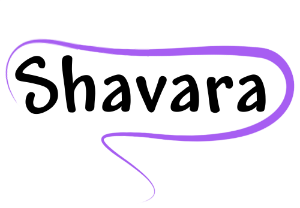As a fitness enthusiast who runs, bikes and lifts weights, I recognize the importance of measurements like distance, speed, weight and repetitions.
Since my goals are typically just to keep in shape or finish a fun race here or there, I track my “numbers” the old fashioned way, in a simple notebook which is sophisticated enough for me.
I track my “numbers” the old fashioned way, in a simple notebook which is sophisticated enough for me.
For the more serious, competitive type athlete, the market is full of technical gadgets  to track those details and the more intricate things like heart rate, cadence, elevation change, etc.
to track those details and the more intricate things like heart rate, cadence, elevation change, etc.
It boils down to one simple rule:  If you want to have a good performance, you need to do the hard work and the measurements can prove you’ve done the work.
If you want to have a good performance, you need to do the hard work and the measurements can prove you’ve done the work.
This same rule applies to the financial performance of your medical practice.  For it to be successful the work has to be done, but how do you know the work has been done and done well?
For it to be successful the work has to be done, but how do you know the work has been done and done well?
![]() With Iridium Suite Practice Management Software you can utilize an extensive variety of biller efficiency reports to evaluate your medical billing staff and the quality of their work processes.
With Iridium Suite Practice Management Software you can utilize an extensive variety of biller efficiency reports to evaluate your medical billing staff and the quality of their work processes.
Below I have provided the highlights of a few of the useful reports that can be generated:

 Biller Time Worked – This section of reports offers the ability to measure these statistics:
Biller Time Worked – This section of reports offers the ability to measure these statistics:
Daily Log – a running journal of how much time each day is being spent by each biller actively using the system.
Biller Time and Biller AR Revenue Comparison – indicates the number of hours each biller has worked with the total amount of revenue collected as a result of that work.
Cost per Service Line Over-Time – provides data on how efficient the biller is in accruing revenue by looking at the AR over time. The cost per service line is evaluated by measuring the number (#) of hours it takes to close a service line.
 Life of a Service Line – This section of reports allows measurements of all aspects of the “life of the service line” from origination to being closed:
Life of a Service Line – This section of reports allows measurements of all aspects of the “life of the service line” from origination to being closed:
The average time to invoice and close the primary payer.
The average time to close the secondary and tertiary payers.
The average time to invoice and to close a patient service line.
The average time to close the service line as a whole.
 Stagnant Accounts Receivables– This section of reports allows you to identify open service lines that have not been touched in a specified number of days, like 30. (You should provide billing staff with the expectation that each open service line should be reviewed and follow up actions performed as necessary in the allotted time frame. If ARs are not attended to, this can result in issues for “untimely filing” denials.)
Stagnant Accounts Receivables– This section of reports allows you to identify open service lines that have not been touched in a specified number of days, like 30. (You should provide billing staff with the expectation that each open service line should be reviewed and follow up actions performed as necessary in the allotted time frame. If ARs are not attended to, this can result in issues for “untimely filing” denials.)
 Biller AR Work Speed & Average Time to Close ARs Template – This section of reports provides the average time it takes a biller to close an AR. This is computed by taking the sum of the total days taken to close all the ARs a biller has worked over the count of ARs
Biller AR Work Speed & Average Time to Close ARs Template – This section of reports provides the average time it takes a biller to close an AR. This is computed by taking the sum of the total days taken to close all the ARs a biller has worked over the count of ARs
 Average Number of Invoices to Close AR Template – This section of reports counts the average number of invoices sent out per service line responsibility. (Excessive invoicing is not only a problem in itself, but can be seen as a side effect of other issues and should be examined closely.)
Average Number of Invoices to Close AR Template – This section of reports counts the average number of invoices sent out per service line responsibility. (Excessive invoicing is not only a problem in itself, but can be seen as a side effect of other issues and should be examined closely.)
 Another piece of the puzzle in keeping your AR cycle short, is avoiding denials. Follow this link to an informative article “Prevent These High Volume Claim Denials” or if pictures are more your style check out this infographic.
Another piece of the puzzle in keeping your AR cycle short, is avoiding denials. Follow this link to an informative article “Prevent These High Volume Claim Denials” or if pictures are more your style check out this infographic.
Whether you are running a race or running a medical practice, it is important to utilize measurements of the work performed and keep your eye on the prize!



